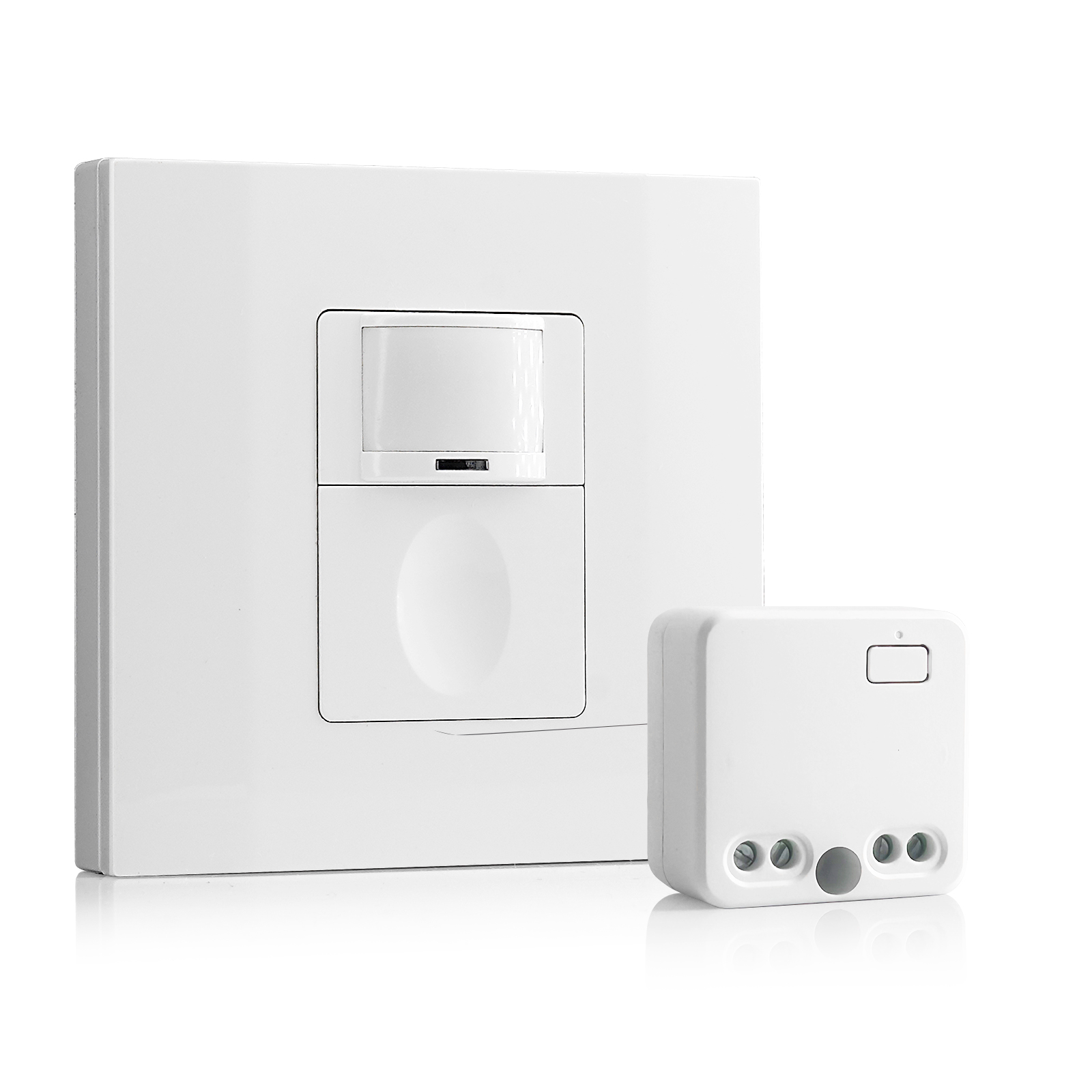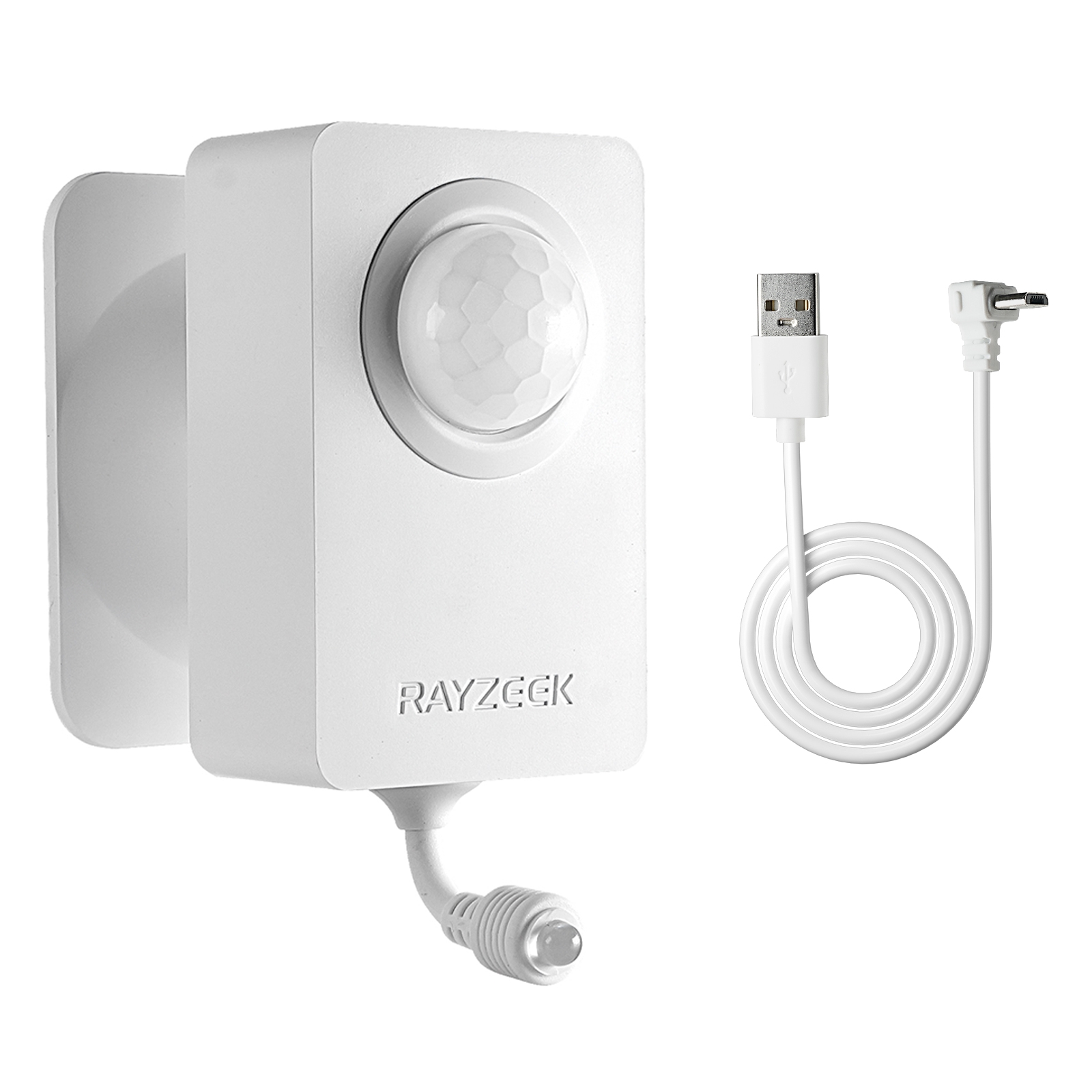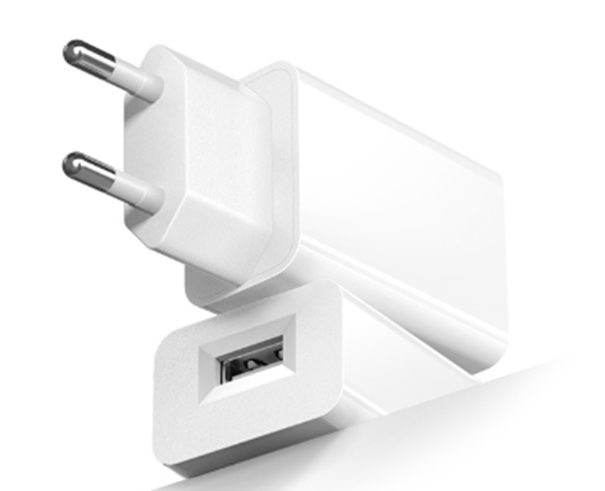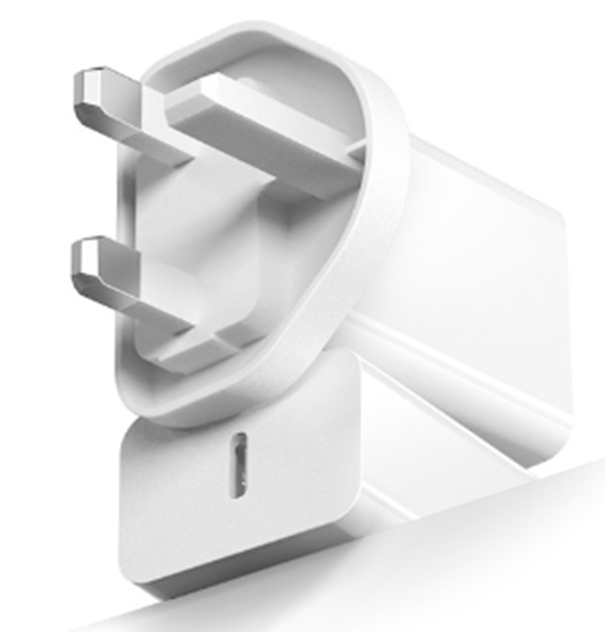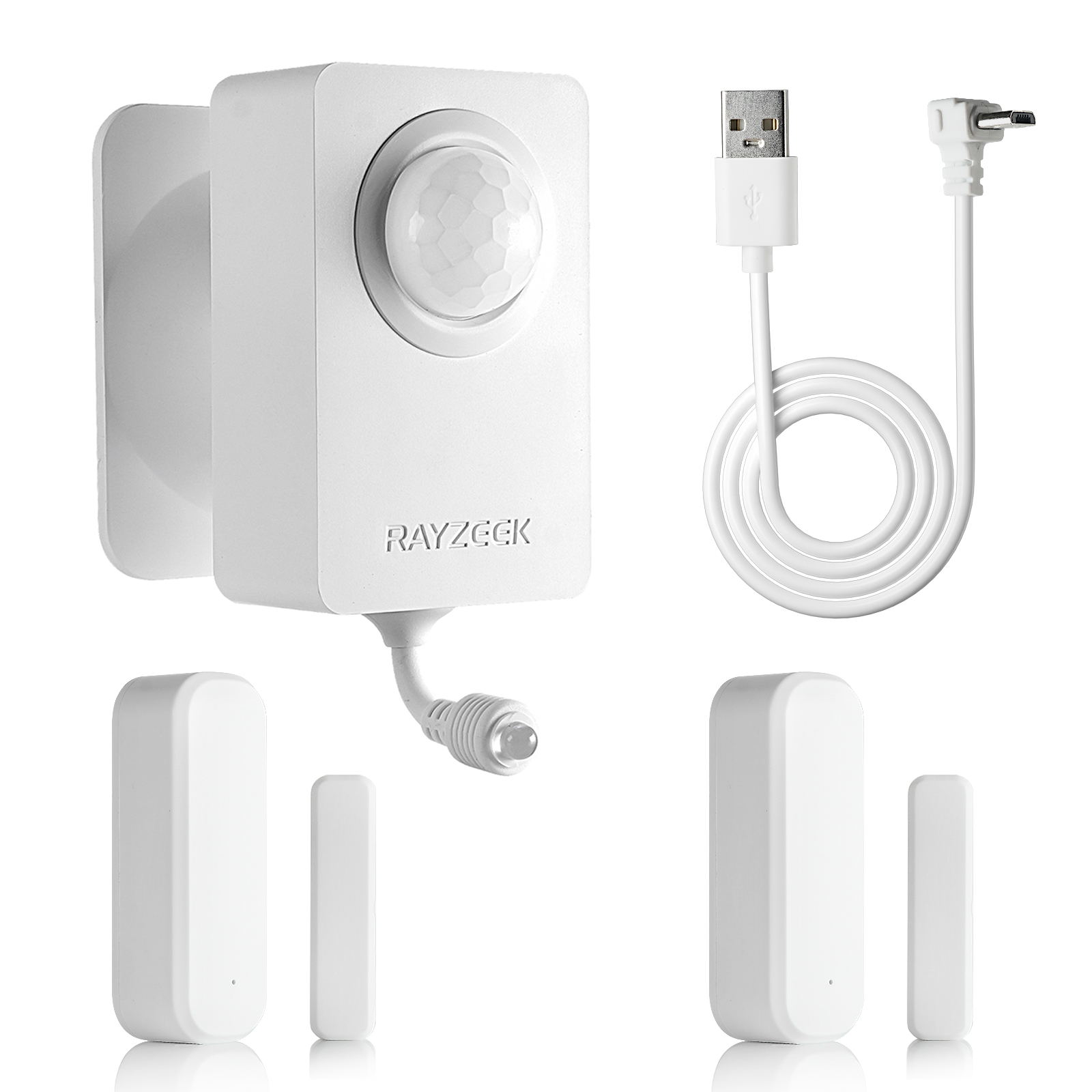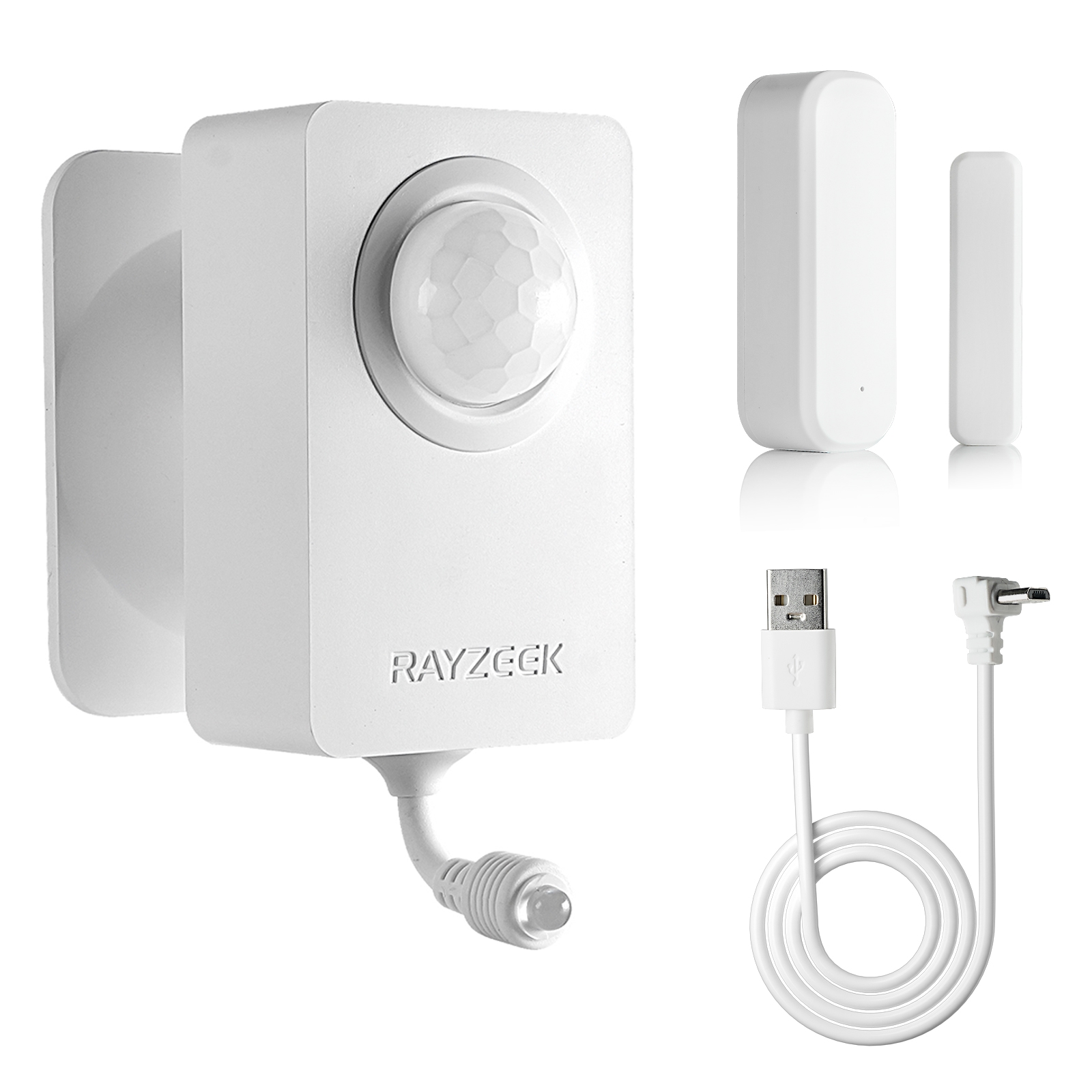Airconditioners zijn essentieel voor comfort in warme en vochtige klimaten. Het zijn apparaten die binnenruimtes afkoelen door warmte en vocht uit de lucht te verwijderen. Heb je je ooit afgevraagd hoe deze schijnbaar magische apparaten werken? Ze werken op basis van de principes van thermodynamica en de koelcyclus, een fascinerend proces waarbij de eigenschappen van koelmiddelen worden gemanipuleerd om warmte van binnen naar buiten te verplaatsen. Laten we ons verdiepen in de innerlijke werking van airconditioners en de wetenschap achter hun koelvermogen ontdekken.
Wat is een airconditioner?
Een airconditioner is een apparaat dat de temperatuur van de binnenlucht verlaagt door warmte en vocht te verwijderen. Het belangrijkste doel is om een comfortabel en gezond binnenklimaat te creëren door de temperatuur en vochtigheid te regelen. Maar hoe bereikt het dit? Het basisprincipe achter airconditioning is de overdracht van warmte van de binnenkant van een ruimte naar de buitenkant, met behulp van een speciale vloeistof die koelmiddel wordt genoemd en die warmte absorbeert en afgeeft wanneer het van toestand verandert. Zie het als een warmteshuttle, die constant warmte-energie verplaatst van waar je het niet wilt hebben naar waar het kan worden afgevoerd.
Soorten airconditioners
Er zijn verschillende soorten airconditioners verkrijgbaar, elk met hun eigen voor- en nadelen. Laten we eens kijken naar enkele van de meest voorkomende types:
Raam-airconditioners
Window airconditioners zijn autonome units die ontworpen zijn om in een raamopening geïnstalleerd te worden. Alle onderdelen, inclusief de compressor, condensor en verdamper, zitten in één unit. Ze zijn meestal geschikt voor het koelen van enkele kamers en zijn relatief goedkoop en eenvoudig te installeren. Ze kunnen echter lawaaierig zijn, een deel van het raam blokkeren en zijn over het algemeen minder efficiënt dan andere types.
Draagbare airconditioners
Draagbare airconditioners zijn mobiele apparaten die van kamer naar kamer kunnen worden verplaatst. De onderdelen zijn vergelijkbaar met die van raamunits, maar ze hebben een afvoerslang om de warme lucht naar buiten te blazen. Hoewel ze draagbaar zijn en geen permanente installatie vereisen, zijn ze over het algemeen minder efficiënt, kunnen ze lawaaierig zijn en is er nog steeds een raam of opening nodig voor de afvoerslang. Het is alsof je een koelkameraad hebt die je overal volgt, maar dan met een paar verplichtingen.
Centrale airconditioningsystemen
Centrale airconditioningsystemen zijn ontworpen om een heel gebouw te koelen via een netwerk van kanalen. Ze bestaan uit een buitenunit (met de compressor en condensor), een binnenunit (met de verdamper en luchtbehandelingskast) en een leidingnet dat de gekoelde lucht verdeelt. Deze systemen bieden een efficiënte en stille werking, met gelijkmatige koeling in het hele gebouw. Ze zijn echter duurder om te installeren en vereisen leidingwerk, waardoor ze een aanzienlijke investering vormen.
Kanaalloze minisplitsystemen
Ductless mini-split systemen maken gebruik van individuele binnenunits die via koelmiddelleidingen verbonden zijn met een buitenunit. De buitenunit bevat de compressor en condensor, terwijl één of meer binnenunits de verdamper en ventilator bevatten. Deze systemen kunnen één of meerdere zones onafhankelijk van elkaar koelen en staan bekend om hun efficiëntie, stille werking en flexibele installatie, omdat ze geen leidingwerk nodig hebben. Ze hebben echter hogere aanloopkosten dan raam- of draagbare units en vereisen een professionele installatie.
Geothermische koelsystemen
Geothermische koelsystemen maken gebruik van de stabiele temperatuur van de aarde om gebouwen te koelen en te verwarmen. Ze bestaan uit een aardluswarmtewisselaar, een warmtepomp en een luchtbehandelingskast binnenshuis. In de koelmodus wordt de warmte onttrokken aan de binnenlucht en overgedragen aan de bodemlus, waar ze wordt afgevoerd naar de aarde. Deze systemen zijn zeer efficiënt, milieuvriendelijk en hebben een lange levensduur. Ze brengen echter hoge installatiekosten met zich mee en vereisen voldoende grondoppervlak voor de aardlus. Het is alsof je de natuurlijke koelte van de aarde aftapt om je huis comfortabel te houden.
Belangrijkste onderdelen van een airconditioner
Verschillende belangrijke onderdelen werken samen om de magie van airconditioning mogelijk te maken. Laten we elk van deze essentiële onderdelen eens nader bekijken:
Koelmiddel
Het koelmiddel is een vloeistof die warmte absorbeert en afgeeft terwijl het van toestand verandert tussen vloeibaar en gas. Het is het levensbloed van het airconditioningsysteem dat constant warmte circuleert en transporteert. Koelmiddelen hebben specifieke eigenschappen, zoals een laag kookpunt en een hoge latente verdampingswarmte, waardoor ze ideaal zijn voor deze taak.
Er zijn verschillende soorten koelmiddelen, waaronder R-22 (dat wordt uitgefaseerd vanwege het ozonafbrekend vermogen), R-410A (een veelgebruikte vervanging voor R-22), R-32 (met een lager aardopwarmingsvermogen dan R-410A), R-134a en R-407C.
De keuze van het koudemiddel heeft een grote invloed op de efficiëntie van de koelcyclus. De belangrijkste eigenschappen zijn:
- Kookpunt: Dit bepaalt de temperatuur waarbij het koudemiddel verdampt en warmte opneemt. Lagere kookpunten zorgen voor lagere werkdrukken.
- Latente verdampingswarmte: Dit is de hoeveelheid warmte die wordt geabsorbeerd tijdens de verdamping. Een hogere latente warmte betekent dat er meer warmte wordt geabsorbeerd per massaeenheid koelmiddel, waardoor het koelproces efficiënter wordt.
- Specifieke warmtecapaciteit: Deze eigenschap beïnvloedt de hoeveelheid warmte die wordt geabsorbeerd of afgegeven tijdens gevoelige verwarming of koeling.
- Aardopwarmingsvermogen (GWP): Dit geeft aan hoeveel warmte een koelmiddel in de atmosfeer vasthoudt in vergelijking met kooldioxide. Koelmiddelen met een lager GWP zijn milieuvriendelijker.
- Ozonafbrekend vermogen (ODP): Dit meet het vermogen van een koelmiddel om stratosferisch ozon te vernietigen. Om milieuredenen wordt de voorkeur gegeven aan koelmiddelen zonder ODP.
Compressor
De compressor is het hart van het AC-systeem en is verantwoordelijk voor het comprimeren van het koelmiddel. Hij verhoogt de druk en de temperatuur van het koelgas en bereidt het voor op de volgende fase van de cyclus. Op moleculair niveau verhoogt de compressor de kinetische energie van de koelmiddelmoleculen door het volume dat ze innemen te verkleinen. Deze toename in kinetische energie manifesteert zich als een toename in temperatuur en druk. Het compressieproces verhoogt ook de dichtheid van het koelgas. Er zijn verschillende soorten compressoren:
Zuigercompressoren
Deze maken gebruik van zuigers om het koelmiddel samen te persen, vergelijkbaar met een automotor.
Scrollcompressoren
Deze gebruiken twee spiraalvormige rollen om het koelmiddel te comprimeren, waardoor ze stiller en efficiënter werken.
Roterende compressoren
Deze maken gebruik van een roterende schoep om het koelmiddel samen te persen, en worden vaak aangetroffen in kleinere AC-units.
Inverter aangedreven compressoren
Deze worden steeds populairder vanwege hun werking met variabele snelheid, die een verbeterde efficiëntie en nauwkeurige temperatuurregeling mogelijk maakt.
Condensator
De condensor is een warmtewisselaar waar het hete koelmiddel onder hoge druk warmte afgeeft aan de buitenlucht. Het is als de radiator van je aircosysteem. De functie van de condensor is het condenseren van het koelmiddel van een gas naar een vloeistof. Hij bestaat uit spoelen, lamellen en een ventilator.
Zo werkt het: Heet koelgas stroomt door de condenserspoelen. De ventilator blaast buitenlucht over de spoelen, waardoor warmte van het koelmiddel wordt geabsorbeerd. Terwijl het koelmiddel warmte verliest, condenseert het tot een vloeistof. Dit proces van warmteoverdracht omvat geleiding (warmteoverdracht van het koelmiddel naar de spoelen), convectie (warmteoverdracht van de spoelen naar de lucht) en condensatie (het koelmiddel verandert van toestand, waardoor latente warmte vrijkomt).
Laat u inspireren door Rayzeek Motion Sensor Portfolio's.
Vind je niet wat je zoekt? Maak je geen zorgen. Er zijn altijd alternatieve manieren om je problemen op te lossen. Misschien kan een van onze portfolio's helpen.
Verdamper
De verdamper is een andere warmtewisselaar, maar zijn rol is het absorberen van warmte uit de binnenlucht. Hier verdampt het koelmiddel van een vloeistof in een gas, waardoor het koeleffect ontstaat. De verdamper bestaat uit spoelen, lamellen en een ventilator (of blower).
Het proces verloopt als volgt: Vloeibaar koudemiddel stroomt door de verdamperspoelen. De ventilator blaast binnenlucht over de spoelen, waardoor warmte wordt overgedragen aan het koelmiddel. Terwijl het koudemiddel warmte absorbeert, verdampt het tot een gas. Hierbij is sprake van geleiding (warmteoverdracht van de lucht naar de batterijen), convectie (warmteoverdracht van de lucht naar het koelmiddel) en verdamping (het koelmiddel verandert van toestand en neemt latente warmte op).
Expansieventiel
Het expansieventiel regelt de toevoer van koelmiddel naar de verdamper. Het verlaagt de druk en temperatuur van het koudemiddel voordat het de verdamper ingaat, waardoor het effectiever warmte kan absorberen. Er zijn twee hoofdtypen:
- Thermostatisch expansieventiel (TXV): Dit type regelt de koudemiddelstroom op basis van de verdampertemperatuur en -druk, voor een nauwkeurige regeling.
- Capillaire buis: Dit is een eenvoudigere buis met een vaste diameter die de koelmiddelstroom beperkt. Het is minder duur maar ook minder nauwkeurig dan een TXV.
Het expansieventiel creëert een drukval, waardoor het koudemiddel snel verdampt. Door deze snelle expansie daalt de temperatuur van het koudemiddel. Het expansieventiel handhaaft een specifiek drukverschil tussen de condensor en de verdamper, zodat de verdamper de juiste hoeveelheid koudemiddel ontvangt om aan de koelbelasting te voldoen. Belangrijk is dat het voorkomt dat er vloeibaar koudemiddel in de compressor komt, wat schade kan veroorzaken.
De koelcyclus uitgelegd
De koelcyclus is het proces waarmee airconditioners warmte uit binnenruimtes verwijderen. Het bestaat uit vier hoofdfasen:
Compressiefase
De cyclus begint met de compressor, die koelgas met een lage druk comprimeert tot een gas met een hoge druk en temperatuur. Dit proces vereist arbeid, waardoor de interne energie van het koelmiddel toeneemt. De compressor verhoogt de temperatuur van het koelmiddel tot boven de temperatuur van de buitenlucht, waardoor de warmteoverdracht op gang komt.
Condensatiefase
Het koelgas onder hoge druk en hoge temperatuur stroomt vervolgens naar de condensor. Hier blaast de condensorventilator buitenlucht over de condensorspiralen, waardoor warmte aan het koelmiddel wordt onttrokken. Terwijl het koelmiddel warmte verliest, condenseert het tot een vloeistof onder hoge druk, waarbij latente warmte vrijkomt. Hier wordt de warmte van je huis naar buiten afgevoerd.
Uitbreidingsfase
Het onder hoge druk staande vloeibare koudemiddel gaat vervolgens door het expansieventiel. Dit ventiel verlaagt de druk van het koudemiddel, waardoor het gedeeltelijk verdampt tot een mengsel van vloeistof en gas met een lage druk en temperatuur. Deze plotselinge druk- en temperatuurdaling is cruciaal voor de volgende fase.
Verdampingsfase
Het koelmiddelmengsel met lage druk en lage temperatuur komt in de verdamper terecht. De verdamperventilator blaast binnenlucht over de verdamperspoelen, waardoor warmte wordt overgedragen aan het koelmiddel. Terwijl het koelmiddel warmte absorbeert, verdampt het volledig tot een gas onder lage druk. De gekoelde lucht wordt dan terug de kamer in geblazen en zorgt voor het gewenste koeleffect.
In de thermodynamische principes van koeling duiken
De koelcyclus is een prachtig voorbeeld van toegepaste thermodynamica. Laten we de belangrijkste principes eens op een rijtje zetten:
- Eerste wet van de thermodynamica: Deze wet stelt dat energie niet kan worden gecreëerd of vernietigd, maar alleen overgedragen of veranderd van de ene vorm naar de andere. In de koelcyclus wordt de arbeid die in de compressor wordt gestoken omgezet in warmte, die vervolgens uit het systeem wordt overgedragen.
- Tweede wet van de thermodynamica: Deze wet zegt dat warmte van nature van een warmer naar een kouder voorwerp stroomt. De koelcyclus gebruikt echter arbeid om warmte tegen deze natuurlijke stroom in van een koudere ruimte (binnen) naar een warmere ruimte (buiten) te verplaatsen. Het is alsof je water dwingt om bergopwaarts te stromen - er is energie voor nodig.
- Entropie: Dit is een maat voor wanorde of willekeurigheid. De koelcyclus verhoogt de entropie van de omgeving (buitenlucht) terwijl het de entropie van het systeem (binnenlucht) verlaagt.
- Carnotcyclus: Dit is de meest efficiënte theoretische thermodynamische cyclus voor koeling. Echte koelcycli wijken af van de Carnot-cyclus door onomkeerbaarheden, maar het dient als een belangrijke maatstaf voor efficiëntie.
Druk-thermische diagrammen: De koelcyclus visualiseren
Druk-enthalpie (P-h) diagrammen worden gebruikt om de toestand van het koelmiddel op verschillende punten in de koelcyclus grafisch weer te geven. Het diagram toont de druk op de y-as en de enthalpie (een maat voor de totale warmte-inhoud) op de x-as.
De belangrijkste punten in het diagram zijn:
- Compressorinlaat: Lage druk, lage enthalpie
- Compressoruitlaat: Hoge druk, hoge enthalpie
- Condensoruitlaat: Hoge druk, gemiddelde enthalpie
- Uitlaat expansieventiel: Lage druk, gemiddelde enthalpie
- Verdamperuitlaat: Lage druk, lage enthalpie
Het gebied omsloten door de cyclus op het P-h diagram vertegenwoordigt de werkinput voor de compressor. De horizontale afstand tussen de inlaat en de uitlaat van de verdamper geeft de koelcapaciteit weer. Deze diagrammen zijn essentiële hulpmiddelen voor ingenieurs die koelsystemen ontwerpen en analyseren.
Het belang van oververhitting en onderkoeling
Oververhitting en onderkoeling zijn twee belangrijke concepten in koeling:
- Oververhitting: Dit is de hoeveelheid warmte die aan de koudemiddeldamp wordt toegevoegd nadat deze volledig is verdampt in de verdamper. Het zorgt ervoor dat er alleen damp in de compressor komt, waardoor schade wordt voorkomen, en geeft de efficiëntie van het verdampingsproces aan. Typische oververhittingswaarden variëren van 5-15°F (2,8-8,3°C).
- Onderkoeling: Dit is de hoeveelheid warmte die wordt onttrokken aan de koelvloeistof nadat deze volledig is gecondenseerd in de condensor. Het zorgt ervoor dat alleen vloeistof het expansieventiel binnenkomt, waardoor flashgas wordt voorkomen en de efficiëntie van het expansieproces wordt verbeterd. Typische onderkoelingswaarden variëren van 10-20°F (5,6-11,1°C).
SEER-classificaties begrijpen
SEER, of Seasonal Energy Efficiency Ratio, meet de koelingsefficiëntie van een airconditioner over een heel koelseizoen. De SEER wordt berekend door het totale koelvermogen (in BTU's) tijdens een typisch koelseizoen te delen door de totale elektrische energie-input (in watturen) tijdens dezelfde periode. Hogere SEER-waarden duiden op een grotere energie-efficiëntie. Minimum SEER-normen worden vastgesteld door regelgevende instanties, zoals het Amerikaanse ministerie van Energie.
SEER heeft echter zijn beperkingen. Het is gebaseerd op een gestandaardiseerde testprocedure die mogelijk niet nauwkeurig de werkelijke bedrijfsomstandigheden weergeeft. Het houdt ook geen rekening met variaties in klimaat, gebruikspatronen en installatiekwaliteit. Bovendien wordt er voornamelijk rekening gehouden met gevoelige koeling en wordt de invloed van ontvochtiging op het energieverbruik mogelijk niet volledig weergegeven.
EER-classificaties begrijpen
EER, of Energy Efficiency Ratio, meet de koelefficiëntie van een airconditioner bij een specifieke buitentemperatuur (95°F of 35°C). Het wordt berekend door de koelcapaciteit (in BTU's per uur) te delen door het opgenomen vermogen (in watt) bij die bepaalde temperatuur. Een hogere EER-waarde wijst op een grotere energie-efficiëntie bij hogere temperaturen. EER is een betere indicator voor de prestaties in warme klimaten.
Net als SEER heeft EER ook beperkingen. Het vertegenwoordigt de prestaties op één bedrijfspunt en houdt geen rekening met variaties in efficiëntie bij verschillende temperaturen. Het is ook mogelijk dat de invloed van vochtigheid op de koelprestaties en het energieverbruik niet volledig wordt meegenomen.
Inzicht in BTU-waarden
BTU, of British Thermal Unit, is een maat voor warmte-energie. In de context van airconditioners vertegenwoordigt het de koelcapaciteit - de hoeveelheid warmte die een airconditioner in één uur uit een ruimte kan verwijderen. Een hogere BTU-waarde duidt op een grotere koelcapaciteit.
Het kiezen van de juiste BTU-waarde is cruciaal. Dit hangt af van factoren zoals de grootte van de ruimte, isolatie, plafondhoogte, het aantal ramen en het klimaat. Te kleine apparaten zullen moeite hebben om de ruimte effectief te koelen, terwijl te grote apparaten te vaak aan en uit zullen gaan, wat leidt tot slechte ontvochtiging en verminderde efficiëntie. Het is een delicaat evenwicht dat zorgvuldig overwogen moet worden.
Diepgaande verkenning van compressortechnologie
Laten we eens dieper ingaan op de verschillende soorten compressoren die in airconditioners worden gebruikt:
Zuigercompressoren: Mechanica en efficiëntie
Zuigercompressoren gebruiken zuigers die door een krukas worden aangedreven om het koelgas samen te persen. De werking omvat een zuigslag (waarbij de zuiger naar beneden beweegt en gas onder lage druk aanzuigt), een compressieslag (waarbij de zuiger naar boven beweegt en het gas samenperst) en een afvoerslag (waarbij het gas onder hoge druk naar de condensor wordt afgevoerd).
Op zoek naar bewegingsgevoelige energiebesparende oplossingen?
Neem contact met ons op voor complete PIR-bewegingssensoren, bewegingsgeactiveerde energiebesparende producten, bewegingssensorschakelaars en commerciële Occupancy/Vacancy-oplossingen.
Deze compressoren hebben een matige efficiëntie, die kan worden verbeterd met meerdere cilinders en capaciteitsmodulatie. Ze hebben een relatief eenvoudig ontwerp en lage kosten, maar kunnen lawaaierig en gevoelig voor trillingen zijn. Ze hebben ook de neiging om een lagere efficiëntie te hebben bij deellastomstandigheden.
Scrollcompressoren: Ontwerp en prestatievoordelen
Scrollcompressoren gebruiken twee in elkaar grijpende rollen - één stationair en één ronddraaiend - om het koelmiddel te comprimeren. Koudemiddel wordt in het buitenste gedeelte van de rollen gezogen. Terwijl de draaiende scroll beweegt, wordt het gas geleidelijk samengeperst in kleinere compartimenten naar het midden toe. Het gas onder hoge druk wordt dan in het midden van de rollen afgevoerd.
Deze compressoren bieden een hoge efficiëntie, vooral bij deellast. Ze staan bekend om hun stille werking, soepele en continue compressie, minder bewegende onderdelen en hoge betrouwbaarheid. Ze zijn echter duurder dan zuigercompressoren.
Roterende compressoren: Toepassingen en operationele kenmerken
Roterende compressoren gebruiken een rollende zuiger of roterende vaan in een cilinder om het koelmiddel samen te persen. Bij het rollende zuigertype beweegt een rol langs de binnenkant van de cilinder en comprimeert het gas ervoor. Bij het roterende schoteltype glijden de schoepen in en uit de gleuven van een rotor, waardoor het gas wordt opgevangen en samengeperst.
Deze compressoren hebben een matig tot hoog rendement, afhankelijk van het ontwerp. Ze zijn compact, licht en geschikt voor kleinere toepassingen. Ze kunnen echter minder efficiënt zijn dan scrollcompressoren en er kan koudemiddel lekken.
Inverter aangedreven compressoren: Werking met variabele snelheid en energiebesparing
Invertergestuurde compressoren gebruiken een frequentieregelaar (inverter) om de snelheid van de compressormotor te regelen. De inverter past de frequentie van de stroomtoevoer naar de motor aan, waardoor de compressor op verschillende snelheden kan werken. De snelheid van de compressor wordt aangepast aan de koelvraag, waardoor de temperatuur nauwkeurig wordt geregeld.
Deze compressoren bieden een zeer hoge efficiëntie, vooral bij deellast. Ze zorgen voor aanzienlijke energiebesparingen, meer comfort, een stillere werking en een langere levensduur van de compressor. Ze hebben echter hogere initiële kosten en een complexere technologie.
Geavanceerde warmtewisselaarontwerpen voor verbeterde prestaties
Het ontwerp van de warmtewisselaar speelt een cruciale rol in de algehele prestaties van een aircosysteem. Laten we eens kijken naar enkele geavanceerde ontwerpen:
Microkanaal-warmtewisselaars: Verhoogd oppervlak en warmteoverdracht
Microkanaal-warmtewisselaars gebruiken kleine, parallelle kanalen in plaats van traditionele ronde buizen voor de stroming van koelmiddel. Dit ontwerp biedt verschillende voordelen, zoals een groter oppervlak voor warmteoverdracht, een betere warmteoverdrachtscoëfficiënt, minder koelmiddel nodig en een compact formaat met een lager gewicht. Ze worden vaak gebruikt in airconditioning in auto's en worden steeds vaker toegepast in huishoudelijke en commerciële systemen.
Warmtewisselaars met vinnen en buizen: Optimalisatie van vingeometrie en afstand
Warmtewisselaars met vinnen en buizen bestaan uit buizen die koelmiddel transporteren en vinnen die de warmteoverdracht naar de lucht verbeteren. Optimalisatie van het vinontwerp is cruciaal voor de prestaties. De dichtheid van de vinnen (het aantal vinnen per inch) is belangrijk - een hogere dichtheid vergroot het oppervlak, maar kan ook de luchtdrukval verhogen. De vorm van de vinnen speelt ook een rol, met verschillende vormen zoals lamellen met lamellen met lamellen met lamellen met golfjes die de luchtturbulentie en warmteoverdracht verbeteren. De afstand tussen de vinnen is een andere factor, waarbij een optimale afstand zorgt voor een evenwicht tussen warmteoverdracht en luchtstroomweerstand. Een juist vinontwerp kan de efficiëntie van de warmteoverdracht aanzienlijk verbeteren en het energieverbruik verlagen.
Invloed van het ontwerp van de warmtewisselaar op de efficiëntie en capaciteit van het systeem
Het ontwerp van de warmtewisselaar heeft een directe invloed op de snelheid van de warmteoverdracht, wat hun belangrijkste functie is. Het heeft ook invloed op de drukval van zowel het koelmiddel als de lucht, waardoor de compressor en het ventilatorvermogen worden beïnvloed. Daarnaast heeft het ontwerp invloed op de hoeveelheid koudemiddel die nodig is in het systeem. Efficiënte warmtewisselaars dragen bij aan een hogere koelcapaciteit, een lager energieverbruik en betere SEER/EER-waarden. Ze zijn een kritieke factor in de algehele systeemprestaties.
Uw airconditioner onderhouden voor optimale prestaties
Regelmatig onderhoud is essentieel om je airconditioner efficiënt en effectief te laten werken. Hier zijn enkele belangrijke onderhoudstaken:
- Maak de luchtfilters regelmatig schoon of vervang ze: Vuile filters beperken de luchtstroom, waardoor de efficiëntie en koelcapaciteit afnemen.
- Reinig de condensor- en verdamperspoelen: Vuil en puin op de spoelen kunnen de warmteoverdracht belemmeren, waardoor je systeem harder moet werken.
- Controleer het koelmiddelpeil: Een laag koelmiddelpeil kan duiden op een lek en de prestaties van het systeem verminderen.
- Inspecteer en reinig de condensafvoer: Een verstopte afvoer kan waterschade veroorzaken en de vochtigheidsregeling beïnvloeden.
- Bewegende onderdelen smeren: Een goede smering van ventilatormotoren en andere bewegende delen zorgt voor een soepele werking en voorkomt slijtage.
- Plan jaarlijks professioneel onderhoud: Een gekwalificeerde technicus kan een uitgebreide inspectie uitvoeren, potentiële problemen identificeren en de prestaties van het systeem optimaliseren.
Goed onderhoud kan de levensduur van je airconditioner verlengen, de energie-efficiëntie verbeteren, dure reparaties voorkomen, zorgen voor optimale koelprestaties en een goede luchtkwaliteit binnenshuis behouden. Het is een investering die op de lange termijn rendeert.
De dimensionering en afstemming van componenten zijn ook cruciaal voor optimale prestaties. De capaciteit van de compressor moet worden afgestemd op de koelbelasting en de grootte van de condensor en verdamper. De condensor moet groot genoeg zijn om de door de verdamper geabsorbeerde warmte plus de compressiewarmte af te voeren. De verdamper moet de juiste grootte hebben om de vereiste hoeveelheid warmte van de binnenruimte te absorberen. Het type en de grootte van het expansieventiel moeten gekozen worden om het juiste koelmiddeldebiet te leveren en een optimale oververhitting te behouden. Tot slot moet de ventilator of blower voldoende luchtstroom over de verdamper- en condensorspiralen leveren voor een effectieve warmteoverdracht.
Niet op elkaar afgestemde componenten kunnen leiden tot verminderde koelcapaciteit, hoger energieverbruik, vroegtijdige uitval van componenten, slechte temperatuur- en vochtigheidsregeling en een kortere levensduur van het systeem. Het is alsof je een marathon probeert te lopen met te kleine schoenen - je zet jezelf op voor een mislukking.
Misschien bent u geïnteresseerd in
Naast regelmatig onderhoud kun je de prestaties van je airconditioner verder optimaliseren en aanzienlijk besparen op energiekosten met slimme technologie. Heb je er bijvoorbeeld ooit bij stilgestaan dat je airco misschien aanstaat als er niemand thuis is? Een aanzienlijk deel van de energie wordt vaak verspild wanneer airconditioners blijven draaien in onbezette kamers. Dit is waar een slimme oplossing zoals de Rayzeek RZ050 airconditioner bewegingssensor van pas komt.
De RZ050 is een eenvoudig maar effectief apparaat dat automatisch je AC uitschakelt wanneer een kamer leeg is, waardoor onnodig energieverbruik wordt voorkomen. De RZ050 leert het commando "Power OFF" van je AC-afstandsbediening en detecteert op intelligente wijze wanneer een kamer leeg is, waarna het signaal wordt verzonden om de AC uit te schakelen na een instelbare vertraging. Dit bespaart je niet alleen geld op je energierekening, maar verlengt ook de levensduur van je airco-eenheid door onnodige slijtage te verminderen.
RZ050 airconditioner bewegingssensor
Zet je airco automatisch uit als je weggaat, zo bespaar je energie en geld.
- Bespaar tot 50% op AC energierekeningen door de AC automatisch uit te schakelen in lege kamers.
- Eenvoudige doe-het-zelf-installatie met een draadloos ontwerp op batterijen - gewoon aan de muur plakken of schroeven.
- De nachtmodus zorgt voor een ononderbroken slaap door te voorkomen dat de AC 's nachts uitschakelt.
Door de RZ050 op te nemen in je AC-onderhoudsroutine zorg je er niet alleen voor dat je systeem soepel werkt; je zet ook actief een stap in de richting van een energiebewustere en kosteneffectievere benadering van thuiskoeling.


